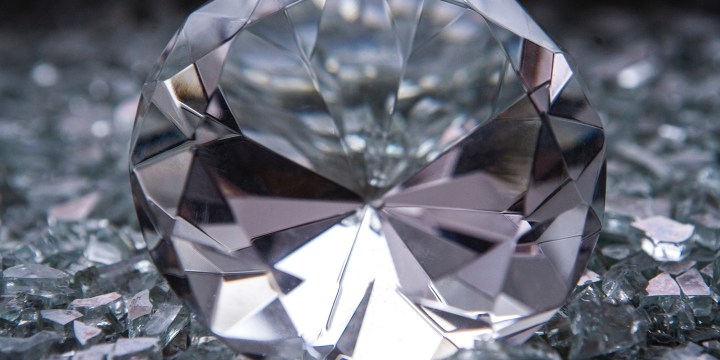SYNTHESISED GEMS
Fake it till you make it: Why lab-grown diamonds are all the rage

Most customers – particularly younger buyers – who choose synthesised diamonds are doing so for environmental and ethical considerations as much as price sensitivity.
More than 70 years after a woman working for De Beers’ ad agency coined one of the most famous slogans in the advertising sector – “A diamond is forever” – a new breed of consumer is choosing synthesised diamonds over mined gems.
These are not cubic zirconias or the moissanite diamond “alternatives”; these are grown in a laboratory from the real deal. They are diamonds in every way but for their genesis.
Lab-grown diamonds have identical chemical, thermal, optical and physical characteristics, and are graded according to the same standards known as the 4Cs – cut, colour, clarity and carat. They are so perfect that not even a trained eye will be able to see the difference without using testing machines.
In August 2022, leading international jewellery company Pandora announced it would no longer use mined diamonds, to transform the market for diamond jewellery with more affordable products and greatly reduced CO2 emissions.
The world’s largest jewellery brand introduced lab-grown diamonds in the US and Canadian markets after a small trial in the UK: “The future of luxury is here today. Lab-created diamonds are just as beautiful as mined diamonds, but available to more people and with lower carbon emissions,” said Pandora CEO Alexander Lacik.
“We are proud to broaden the diamond market and offer innovative jewellery that sets a new standard for how the industry can reduce its impact on the planet.”
The Danish company’s diamonds are grown by third-party suppliers using only renewable energy and are set into jewellery made with recycled silver and gold.
Citing data from Statista, Pandora said the global diamond jewellery market is estimated at $84-billion.
Pandora’s lab-created diamonds are grown, cut and polished using 100% renewable energy and have a carbon footprint of only 8.17kg CO2e per carat – 5% of that of a mined diamond.
Eco-consciousness selling point
Shelley Wilkinson-Rorich, head of design and innovation at American Swiss, said they are now offering customers the choice between mined or created diamonds. Created diamonds are available in larger sizes at more affordable prices.
Eco-consciousness is a big selling point.
“The process for creating lab-grown diamonds is renewable and sustainable… with the added benefits of complete transparency when it comes to diamond provenance and being conflict-free.”
Lab-grown diamonds are virtually indistinguishable from their mined, natural counterparts. Customers also receive certificates of quality from independent diamond grading laboratories for their 1ct-and-above stones.
She said lab-grown diamonds can now be created in larger sizes and in an array of colours, which expands design possibilities.
Most customers – particularly younger buyers – who choose these diamonds are doing so for environmental and ethical considerations as much as price sensitivity.
“South African consumers love natural diamonds. But the lab-grown diamonds that we have brought in are incredibly white – DEFs, which are the top white stones.”
One carat, on special, is currently selling for less than R20,000, while the same quality mined diamond costs R23,000 per carat.
Wilkinson-Rorich said that, unlike Pandora, American Swiss would not be breaking up with natural diamonds, but lab-created diamonds are an option.
“[Lab-grown] is a global phenomenon. If anything, the diamond industry has undergone significant transformation over this; it’s an alternative to diamonds.”
Faced with the choice between natural or lab-created, jewellers have access to more customers.
“I’m really excited about this because it is the future of our industry.” DM


















R20,000 versus R23,000 for 1 carat diamonds of the same quality isn’t exactly a huge difference. It’s a 13% reduction. How is this a big deal, as made out by the article?
Compare this with the dying days of the USSR, when they were selling “Russian Bears” in the 1980s, which were artificial diamonds. They were typically elongated and green, and lent themselves to an Emerald Cut. What was significant about them is that the USSR was so desperate for foreign currency that they sold them for well under the cost of manufacture.
As diamonds had been increasing steadily in price until the bottom fell out of the market, many cutting houses were borrowing money to buy diamonds to keep in the safe and sell later at higher prices. Once the Russian Bears hit the market, the banks demanded that their loans be repaid. This required the cutters to sell their stock, into an already depressed market. A classic market collapse. In 1983, IIRC.
The pricing of -13% (R20k (lab) vs R23k (natural) per carat) cannot be correct.
Typically lab grown diamonds are 60-80% less than natural mined diamonds.
The technology to grow high quality, lower cost diamonds in a lab has been around for decades. But between long standing suppression by the diamond mining industry and the lack of a suitable catch/selling point commercially grown diamonds have never (publically) reached the jewelry markets in high numbers (though allegedly over the years many lab grown diamonds have been slipped into batches of natural diamonds by De Beers and others to see if they were picked up by buyers, cutters or manufacturers (few were)) . Interesting that using “green”/ “lower carbon foorprint” as the unique selling point has finally allowed the breakthrough.